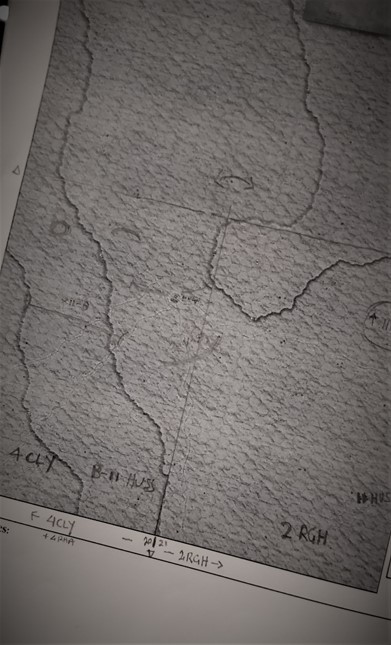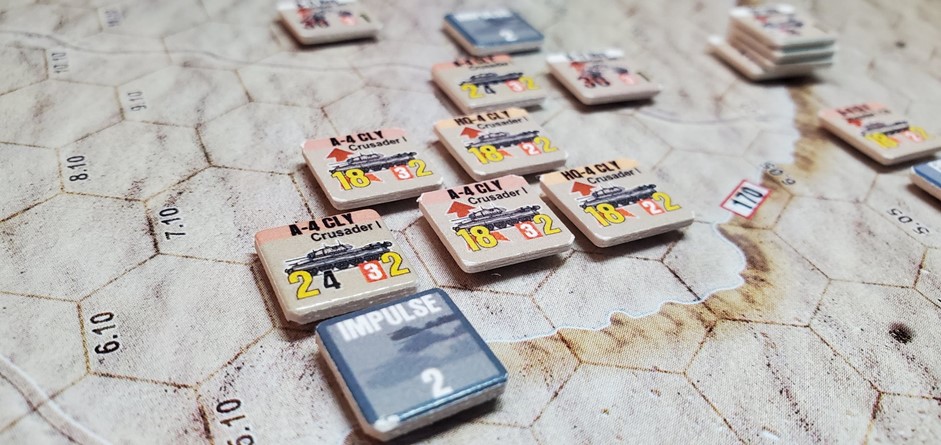Barrie Pitt’s trilogy regarding action on the African front during WWII had this to say about the Battle around Bir el Gubi:
We pick up the conversation with an analysis of some level of confusion around intention of orders for the Commonwealth forces.
“One result of the uncertainty thus generated was the issue of two sets of orders which although apparently in some agreement, differed in one vital respect. Strafer Gott, who had no intention of allowing 7th Armoured Division to lose the momentum they had acquired during the first day of the operation by hanging about doing nothing on the second, issued orders that on the morrow the armoured car screens were to probe forward both north and west, that the Support Group with the 22nd Armoured Brigade in close attendance should investigate Bir el Gubi where it was known that Bersaglieri of the Ariete Armoured Division were in strength, and that 7th and 4th Armoured Brigades should be prepared for battle with the Afrika Korps to the north.
Two hours later, XXX Corps issued orders upon Cunningham’s direction, that 7th Armoured Division would secure both Bir el Gubi and Sidi Rezegh on the direct line towards Tobruk, and that the 1st South African Brigade would move up to take over Bir el Gubi, with their 5th Brigade moving to Gueret Hamza some ten miles south along the same axis. As the message ended with the statement that bomber support had been requested for the following day above both Ed Duda and El Adem, and that the Army Commander was ‘anxious to stage relief’ – presumably of Tobruk – it seemed that the decision had been taken to go straight for the port without achieving that ‘destruction of the enemy armour’ which had previously been considered so vital.
But as the message also precluded any move by 4th Armoured Brigade Group much further westwards, it seemed that this amendment to the original Crusader plan envisaged two brigades, one totally inexperienced and the other equipped largely with outdated tanks, between them brushing aside the Ariete formations at Bir el Gubi and advancing to Tobruk against whatever resistance Rommel could organise; and presumably the bland indifference with which Afrika Korps had regarded Eighth Army moves to date would not continue once their vital communications between Sidi Rezegh and Ed Duda were threatened.
Whatever the thinking, Gott accepted that 22nd Armoured Brigade’s blooding in battle would now be as leaders instead of in support, and that its support in turn would come from the South Africans, while Jock Campbell’s more experienced force remained close to Gabr Saleh ready to follow 7th Armoured Brigade north towards Sidi Rezegh and Tobruk beyond.
A matter not greatly considered was that however derisory the performance of the Italian M13s might be, they would fight a defensive battle and thus be well supported by their artillery; and another was the inadequacy of the communications system.
The orders for the moves of the South African brigades up towards El Gubi only reached General Brink the following morning, and he understood them to mean that his men would only move into and occupy the location after the armour had captured it.
The move against Bir el Gubi by 22nd Armoured Brigade began early in the morning, and by noon the Crusaders of 2nd Royal Gloucester Hussars were on the outer defence line, driving the first enemy tanks their crews had ever seen back into the perimeter.
It was an exhilarating experience for them. There was then a pause, more Crusaders from the 4th County of London Yeomanry (C.L.Y.) came up on their left, and despite warnings from one of the 11th Hussars’ squadron commanders, a full-scale copybook attack was launched against what the Brigade Staff thought was a mobile defence post five miles east of El Gubi, but which proved to be a heavily fortified main line screened by dummies, behind which sheltered, in fact, the whole of the Ariete Armoured Division.
It was extraordinary that the Crusaders did so well. One observer said that the main attack was ‘the nearest thing to a cavalry charge with tanks seen during this war’, and its very unlikelihood may have given it a first spectacular advantage during which 34 M13s and 12 Italian guns were knocked out, and over 200 of the Bersaglieri killed or taken prisoner – a score which might indeed have been larger.
One of the 4th C.L.Y. squadron commanders, Viscount Cranley, later wrote: The enemy seemed somewhat daunted by this spirited, if not very professional, attack and were coming out of their trenches in considerable numbers, offering to surrender, but thanks to brigade headquarters not having listened to the 11th Hussars, there was no infantry close enough to take over, and the bulk of my tanks were by now knocked out.
The enemy quickly appreciated the position and, bobbing back again, started to shoot us up once more. By 1630, both the Gloucester Hussars and the 4th C.L.Y. had run into severe trouble against artillery and in minefields, and the 3rd C.L.Y. who had mounted a relieving attack to the north-west, had also suffered heavily in a counter-attack by the main body of the Italian 132nd Tank Regiment; blazing Crusaders littered the area around Bir el Gubi, grounded tank crews ran for shelter towards anything which moved and might be friendly, while isolated tanks, the rest of their troop burnt out or trackless, collected together and moved slowly and uncertainly back out of range of the still efficient and relentless Italian gunners.
Wireless communications had long since broken down.
That evening, 22nd Armoured Brigade reported that they had lost half their tanks, though the Italians only claimed that they had destroyed fifty so perhaps the other thirty-two had merely broken down; but the fact remained that one of the three brigades with which Cunningham intended to destroy the Afrika Korps armour had been very roughly handled – and Bir el Gubi was still firmly held by the Ariete Division. ”

One of the challenges and indeed expectations of the historical wargame player is the closeness to which an approximation of history is viable in any given game and scenario inside a game. Something suggests to me that this will be a challenge here when we begin our exploration of Ariete in the TCS system.


